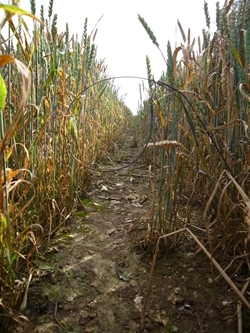Contents
Background
Q: What is the central issue?
 A: Snares are considered valuable for the control of foxes, but they have been criticised for perceived low target selectivity and poor animal welfare. This has driven further research, which has resulted in changes in snare design, codes of practice (Wales and Scotland) and legislation (Scotland).
A: Snares are considered valuable for the control of foxes, but they have been criticised for perceived low target selectivity and poor animal welfare. This has driven further research, which has resulted in changes in snare design, codes of practice (Wales and Scotland) and legislation (Scotland).
Q: Are there direct alternatives to snares?
A: No. There are no functional replacements yet that match the advantages of a snare. Despite their shortcomings, this is precisely why some important conservation projects use them to help control foxes – including the ten-year study to recover Langholm Moor (funded by Buccleuch Estates, Scottish Natural Heritage, the Game & Wildlife Conservation Trust, the RSPB and Natural England).
Q: Are snares used in the UK designed to kill?
A: No. Snares are a live-capture device used by gamekeepers and farmers (in similar numbers). They are designed to catch and hold a fox without injury until it is dispatched humanely (or released if it is a non-target). Snares are regulated through both legislation and codes of practice. Their use is limited by the Wildlife & Countryside Act (1981) and subsequent devolved legislation.
Q: Can a snare really catch an animal alive and uninjured?
A: Yes. We know this because biologists have used snares for decades, as an efficient way to catch foxes and badgers alive in order to fit radio tags to study their ecology (in some cases re-capturing them). Used in this way, injuries are rare. After release, tagged animals show no abnormal behaviour, survive normally and breed normally.
Q: Is there a humaneness standard for trapping, and how do snares compare?
A: Fox snares, correctly used, meet the humaneness standards for restraining traps defined in the Agreement on International Humane Trapping Standards (AIHTS) In contrast, the common mouse trap does not.
Useful links
- Our fox-snaring guidelines offer extensive information on the design, use and legality of snaring.
- Codes of practice for the various UK administrations can be downloaded from here.
- For practitioners who are concerned about the licensing and legal recommendations surrounding snaring and other predator control, we run regular courses and have advisors available in your region.
- We have published a position statement setting out the background to this issue and our research-led recommendations for policymakers.